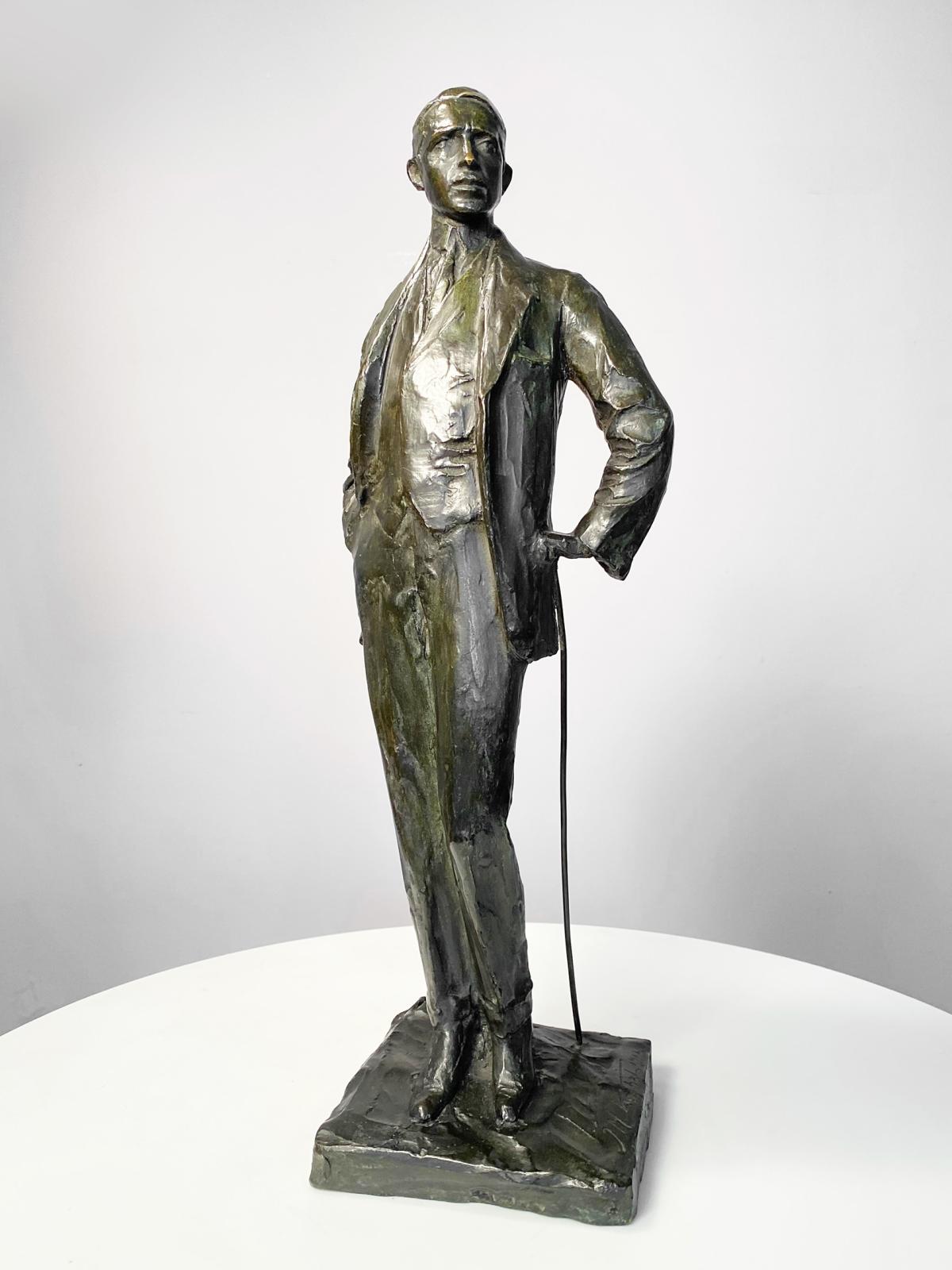artist
Mario Joseph Korbel was born in Bohemia, later a part of Czechoslovakia, in 1882. He studied art there, and at the age of 18 came to the United States and settled in Chicago. After five years he returned to Europe, studying in Berlin, at the Royal Academy, Munich, and in Paris at the Academie Julian. He returned to the United States, spending time in New York City, Chicago, and eventually in 1913 he settled in New York. During the 1920s, Korbel’s most significant sponsor was George Booth, the owner of the Detroit News.
He worked in bronze, often experimenting with this media, trying new patinas and textures. He often depicted idealized female nudes, and worked in the neoclassical style. Korbel was an Associate Member of the National Academy of Design, 1937; and full member of the Nation Academy of Design, 1944. His works are in a number of public collections, and he completed commissions for the state of Illinois, the McPhee Memorial in Denver, the University of Havana, Cuba, the Czech National Council, and the British-American Ambulance Corps.
Description
Portrait of a Gentleman is a fine example of what Katherine Solender called Korbel’s “classical sense of order and proportion, as well as his intimate sensitivity to the decorative quality of line.” There was a fashion and trend toward distinguished depictions of accomplished gentleman and ladies of that era at the turn of the century. .The artist embraced a type of simplicity of form reminiscent of early Greek sculpture and present in the work of Rodin. Here stands a contemporary turn-of-the-century gentleman of wealth and stature and part of the appeal is the stance of the turned head and the weight being on one leg over the other. A successful sculptor makes this tangible as well as drawing the viewers eye along the delicate lines of the folds of the suit. The size of the sculpture is intentionally one that can sit on a desk or side table where works like this make for intimacy in a room.
An important note is that Korbel cast this at the Monteguielli foundry which was only in business for a number of years. This foundry was used by Rodin and other distinguished sculptors of the time before they closed the business. They did fine casting at this foundry. This is not numbered but the stamp indicates it is a lost wax cast and we believe this would have been cast in very low numbers , potentially under 5 casts.











